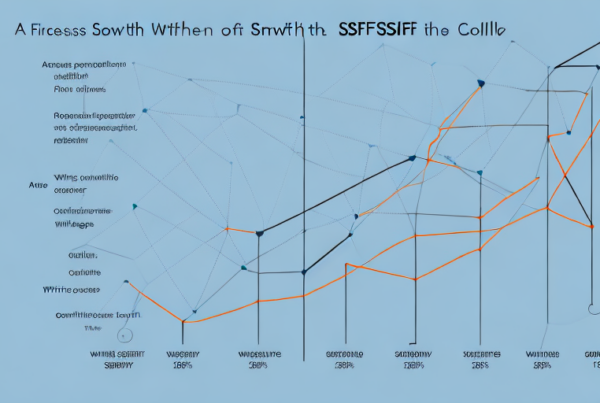As a trustee of a self-managed superannuation fund (SMSF), you carry many legal and ethical responsibilities. Not only do you need to adhere to the regulatory framework set up by the Australian government, but you also need to act in the best interests of the fund’s members. In this article, we’ll explore various aspects of SMSF trustee responsibilities that you need to keep up to date with in 2023.
Understanding SMSF Trustee Responsibilities
To effectively manage an SMSF, it’s essential to understand what constitutes an SMSF trustee’s responsibilities. A trustee is an individual or a company responsible for handling the essential functions and the fund’s day-to-day operations. A trustee must perform their duties with talent, care, and diligence and ensure that the SMSF complies with relevant laws and regulations.
Being an SMSF trustee is a significant responsibility that requires a thorough understanding of the rules and regulations governing SMSFs. Trustees must act in the best interests of all fund members and not prioritize the benefits of one member over another. This means that trustees must make decisions that benefit the fund as a whole, even if it may not be in their personal interest.
Definition of an SMSF Trustee
An SMSF trustee is a person or entity responsible for setting up and managing the fund. The trustee ensures compliance with legal and regulatory requirements, manages assets, and invests contributions. Trustees must act in the best interests of all fund members and not prioritize the benefits of one member over another.
It’s important to note that an SMSF can have either individual trustees or a corporate trustee. An individual trustee is a person who is appointed as a trustee, while a corporate trustee is a company that acts as the trustee.
Key Responsibilities of an SMSF Trustee
As an SMSF trustee, you must understand the significant responsibilities that come with the title. These include:
-
- Managing the fund’s investments
One of the most critical responsibilities of an SMSF trustee is managing the fund’s investments. Trustees must ensure that the investments align with the fund’s investment strategy and that they are made in the best interests of all fund members.
-
- Ensuring the fund complies with tax and other legal obligations
Trustees must ensure that the fund complies with all tax and other legal obligations. This includes lodging tax returns, paying any taxes owed, and complying with any relevant legislation.
-
- Preparing financial statements and arranging an annual audit
Trustees must prepare financial statements for the fund and arrange for an annual audit to be conducted by an approved auditor. The audit ensures that the fund is being managed in accordance with the law and that the financial statements are accurate.
-
- Managing the SMSF’s assets
Trustees must manage the SMSF’s assets, including buying and selling assets and ensuring that they are adequately insured. Trustees must also ensure that the assets are protected and that they are not put at risk by any investment decisions.
-
- Maintaining accurate records
Trustees must maintain accurate records of all transactions and decisions made by the fund. This includes keeping records of all contributions, investments, and expenses.
-
- Ensuring the fund’s investments align with the investment strategy
Trustees must ensure that the fund’s investments align with the investment strategy outlined in the fund’s trust deed. This includes regularly reviewing the investment strategy and making changes if necessary.
It’s crucial to stay up to date with the latest regulations to ensure you’re meeting all your obligations as a trustee. Trustees should seek professional advice if they are unsure about any aspect of their responsibilities.
The Role of the Trust Deed
The trust deed outlines the rules and regulations surrounding the SMSF. As a trustee, you must follow the trust deed’s directives and ensure that all decisions align with the document. The trust deed should explain the fund’s purpose, the membership criteria, and how benefit payments work. Trustees must regularly review the trust deed and ensure it’s in line with current regulations.
It’s important to note that the trust deed can only be changed in accordance with the law and the fund’s governing rules. Any changes must be made with the best interests of all fund members in mind.
In conclusion, being an SMSF trustee is a significant responsibility that requires a thorough understanding of the rules and regulations governing SMSFs. Trustees must act in the best interests of all fund members and ensure that the fund complies with all legal and regulatory requirements. By fulfilling these responsibilities, trustees can help ensure the long-term success of the fund and the financial security of its members.
Legal Obligations and Compliance
As a trustee of a Self-Managed Super Fund (SMSF), it is important to stay up to date with legal regulations and ensure the fund’s compliance. The regulatory framework for SMSFs can be complex, making compliance responsibilities more challenging for some trustees.
One of the key regulatory obligations for SMSF trustees is to adhere to income tax regulations. This includes ensuring that the SMSF is registered for tax purposes and that all tax returns are lodged on time. Trustees must also ensure that the SMSF complies with the Superannuation Industry Supervision Act, which outlines the rules and regulations for SMSFs.
Another important aspect of compliance for SMSF trustees is ensuring that the SMSF trust deed meets all legal requirements. The trust deed sets out the rules and regulations for the SMSF and must be regularly reviewed and updated to ensure compliance with changing regulations.
Regulatory Framework for SMSFs
In addition to income tax regulations and the Superannuation Industry Supervision Act, SMSF trustees must also comply with other regulatory obligations. These include the Australian Securities and Investment Commission Act, which regulates financial services and products, and the Anti-Money Laundering and Counter-Terrorism Financing Act, which aims to prevent money laundering and terrorism financing.
Compliance with all of these regulations is essential for SMSF trustees to avoid penalties and other legal consequences. Failure to comply with regulatory obligations can result in significant fines, disqualification as a trustee, and even imprisonment in severe cases.
Reporting and Record-Keeping Requirements
As part of their compliance obligations, SMSF trustees must maintain accurate financial records. This includes keeping records of investments, contributions, tax returns, and members’ benefits. Trustees must also prepare financial statements each financial year, appoint an auditor, and submit an annual return to the Australian Taxation Office (ATO).
Keeping accurate records is essential for ensuring compliance with regulatory obligations and for providing transparency to members of the SMSF. It also helps trustees to make informed decisions about the management of the fund.
Penalties for Non-Compliance
The ATO takes non-compliance with SMSF regulations seriously and uses various methods to track down non-compliant trustees. Penalties for non-compliance can be significant and may impact the value of the SMSF.
Fines for non-compliance can range from a few hundred dollars to tens of thousands of dollars, depending on the severity of the breach. Trustees who are found to be non-compliant may also be disqualified from acting as a trustee and may be required to pay back any financial benefits received as a result of the breach.
In severe cases, non-compliance can even result in imprisonment. It is therefore essential for SMSF trustees to stay up to date with regulatory obligations and ensure compliance at all times.
Investment Strategy and Management
Developing an investment strategy is one of the most important functions of an SMSF trustee. It helps manage the fund’s investments and diversify the portfolio to reduce risk. However, developing an investment strategy is not a one-time event. It is an ongoing process that requires constant monitoring and adjustment.
Developing an Investment Strategy
As a trustee, you must develop an investment strategy that aligns with the fund’s objectives and the members’ risk preferences. The strategy should outline an investment plan that includes information on asset allocation, risk management, and expected returns. A well-defined investment strategy can help you achieve your long-term financial goals and provide a roadmap for your investment decisions.
When developing an investment strategy, you should consider factors such as your investment horizon, liquidity needs, and risk tolerance. You should also consider the different asset classes available for investment, such as equities, fixed income, and alternative investments. By diversifying your portfolio across different asset classes, you can reduce the risk of losses due to market fluctuations in a particular sector or asset class.
Diversification and Risk Management
Diversification is a critical component of any investment strategy. By investing in a range of assets, you can reduce the risk of losses due to market fluctuations in a particular sector or asset class. Diversification protects the fund from losing value due to market fluctuations in a particular sector or asset class. However, diversification alone is not enough to manage risk effectively.
SMSF trustees must manage risk when creating and managing the investment portfolio by doing due diligence, staying up to date with market developments, and monitoring portfolio performance. Risk management involves identifying potential risks and taking steps to mitigate them. For example, you may choose to invest in assets with lower volatility or invest in hedging strategies to protect against market downturns.
Monitoring and Reviewing Investments
Monitoring investment performance is essential to ensure the fund is achieving the expected returns. Trustees should regularly review the investment portfolio’s performance to ensure compliance with the investment strategy, diversification, and risk management principles. Regular performance monitoring allows trustees to make informed decisions about portfolio changes and ensure compliance with regulatory obligations.
When reviewing your investment portfolio, you should consider factors such as asset allocation, diversification, and risk management. You should also consider the performance of individual assets and how they contribute to the overall portfolio performance. By regularly reviewing your investment portfolio, you can make informed decisions about portfolio changes and ensure that your investment strategy remains aligned with your long-term financial goals.
In conclusion, developing an effective investment strategy is critical for SMSF trustees. By developing a well-defined investment strategy, diversifying your portfolio, and managing risk effectively, you can achieve your long-term financial goals and protect your fund from market volatility. Regular monitoring and review of your investment portfolio is essential to ensure compliance with the investment strategy and regulatory obligations.
Member Benefits and Contributions
Managing member contributions and benefit payments is another critical function of an SMSF trustee.
Accepting and Managing Contributions
SMSF trustees should accept contributions made by members and transfer them to the fund account. Accepting contributions requires due diligence to ensure the source is legitimate to avoid potential money laundering and terrorism financing risks. Trustees must also monitor contribution caps to avoid exceeding annual limits.
Paying Benefits to Members
Pay benefits to members according to the trust deed’s terms and conditions. The process for paying benefits depends on the individual’s employment status, age, and other factors. Trustees must ensure they manage the benefit payment process accurately and comply with regulatory obligations.
Managing Disputes and Complaints
Despite best efforts, disputes and complaints may occur between trustees and fund members. Trustees must have a process for managing disputes and complaints, comply with dispute resolution regulations, and maintain records of the dispute resolution process.
Conclusion
Managing an SMSF requires significant responsibility. Trustees need to keep up with the complex regulations surrounding SMSFs and ensure that all obligations are met. Understanding and adhering to legal obligations, developing an effective investment strategy, and managing member benefits and contributions are essential functions that trustees must undertake. This article provides an overview of the essential functions required of an SMSF trustee, allowing them to navigate their responsibilities effectively in 2023 and beyond.



